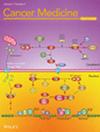A Predictive Model for Surgical Approach Selection in Robotic Partial Nephrectomy and Its Perioperative Outcomes Based on Single-Center Retrospective Data
Abstract
Objectives
To compare the perioperative and postoperative outcomes of transperitoneal and retroperitoneal robotic partial nephrectomy (RPN) and develop a prediction model for reference to select the approach.
Materials and Methods
We retrospectively reviewed our single-institutional RPN database. The patients were divided into training and validation sets. In training set, transperitoneal and retroperitoneal cases were matched using propensity score matching to balance confounding factors. The intraoperative and postoperative outcomes of both approaches were compared. A prediction model was constructed to predict the probability of the retroperitoneal approach. The model was then externally validated using the data from the validation set.
Results
A total of 318 patients were included in the training set, and after propensity score matching, 200 cases were left. Additionally, 92 patients were included in the validation set. The estimated blood loss (p = 0.021) and the hemoglobin change (p = 0.016) were greater in the transperitoneal group. There was no significant difference in operative time (p = 0.539), warm ischemia time (p = 0.678), hospitalization time (p = 0.673), extubation time (p = 0.621), creatinine change (p = 0.623), negative margin (p = 1), local recurrence (p = 1), postoperative complication (p = 0.229), long-term creatinine (p = 0.158), and overall survival (p = 0.671) between the two groups. Tumor diameter, anteroposterior location, longitudinal location, and accessory renal artery were employed as variables to construct the prediction model, resulting in area under the curve values of 0.84 and 0.77, respectively, during internal and external validation.
Conclusions
Retroperitoneal and transperitoneal approaches of RPN showed no difference in perioperative outcomes except estimated blood loss and hemoglobin change. The retroperitoneal approach is recommended for smaller tumors located in the upper pole or posterior and the presence of an accessory renal artery. Our model is available to predict the probability of the retroperitoneal approach.


 求助内容:
求助内容: 应助结果提醒方式:
应助结果提醒方式:


